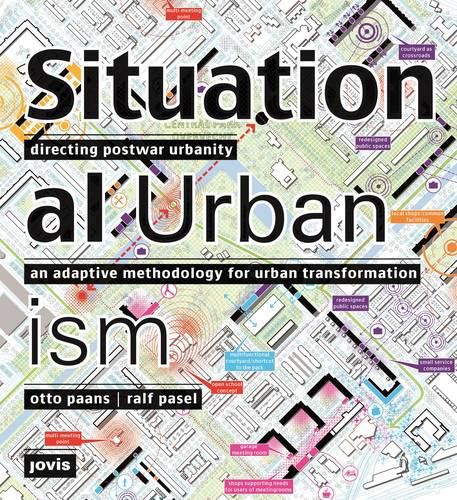Readings Newsletter
Become a Readings Member to make your shopping experience even easier.
Sign in or sign up for free!
You’re not far away from qualifying for FREE standard shipping within Australia
You’ve qualified for FREE standard shipping within Australia
The cart is loading…






Transforming modernistic urban areas to fit contemporary needs is one of the predominant challenges that post-war European cities face today. Although these transformation processes are highly complex they generate a wide variety of chances to take advantage of existing micro-economies, cultural diversity and spatial structures. Situational urbanism is an adaptive methodology that identifies new ways of dealing with modernistic urban areas. In order to synthesise the lived experience on the street with the need for long-term planning, this design approach addresses simultaneously spatial, socio-economic, and cultural issues. This results in a variety of innovative and versatile design strategies that deal with post-war urbanism. The volume combines applicable spatial theory, innovative analytical methods and a comprehensive toolkit of flexible design methods for transforming modernist urban areas, ranging over the full array of scales, from the individual house, via the block to the neighbourhood. SELLING POINT:
Situational urbanism is an adaptive methodology that identifies new ways of dealing with modern urban areas
$9.00 standard shipping within Australia
FREE standard shipping within Australia for orders over $100.00
Express & International shipping calculated at checkout
Transforming modernistic urban areas to fit contemporary needs is one of the predominant challenges that post-war European cities face today. Although these transformation processes are highly complex they generate a wide variety of chances to take advantage of existing micro-economies, cultural diversity and spatial structures. Situational urbanism is an adaptive methodology that identifies new ways of dealing with modernistic urban areas. In order to synthesise the lived experience on the street with the need for long-term planning, this design approach addresses simultaneously spatial, socio-economic, and cultural issues. This results in a variety of innovative and versatile design strategies that deal with post-war urbanism. The volume combines applicable spatial theory, innovative analytical methods and a comprehensive toolkit of flexible design methods for transforming modernist urban areas, ranging over the full array of scales, from the individual house, via the block to the neighbourhood. SELLING POINT:
Situational urbanism is an adaptive methodology that identifies new ways of dealing with modern urban areas